Rice GERMIN-LIKE PROTEIN 2-1 Functions in Seed Dormancy under the Control of Abscisic Acid and Gibberellic Acid Signaling Pathways
- PMID: 32321839
- PMCID: PMC7333727
- DOI: 10.1104/pp.20.00253
Rice GERMIN-LIKE PROTEIN 2-1 Functions in Seed Dormancy under the Control of Abscisic Acid and Gibberellic Acid Signaling Pathways
Abstract
Seed dormancy is a natural phenomenon in plants. It ensures that seeds complete the grain-filling stage before germination and prevents germination in unsuitable ecological conditions. In this study, we determined the previously unknown function of the rice (Oryza sativa) gene GERMIN-LIKE PROTEIN 2-1 (OsGLP2-1) in seed dormancy. Using artificial microRNA and CRISPR/CAS9 approaches, suppression of OsGLP2-1 expression in rice resulted in the release of dormancy in immature seeds. Conversely, overexpression of OsGLP2-1 driven by the OsGLP2-1 native promoter led to greater seed dormancy. Seed scutellum-specific expression of OsGLP2-1 was increased by exogenous abscisic acid, but decreased with gibberellic acid treatment. We provide evidence that OsGLP2-1 is antagonistically controlled at the transcriptional level by ABA INSENSITIVE5 and GAMYB transcription factors. We conclude that OsGLP2-1 acts as a buffer, maintaining appropriate equilibrium for the regulation of primary dormancy during seed development in rice.
© 2020 American Society of Plant Biologists. All Rights Reserved.
Figures
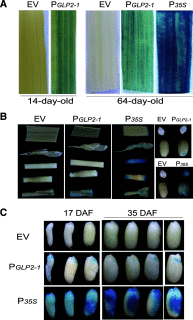
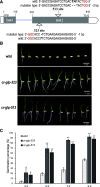
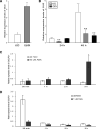


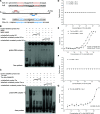
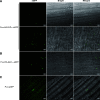
Similar articles
-
OsNAC2 regulates seed dormancy and germination in rice by inhibiting ABA catabolism.Biochem Biophys Res Commun. 2023 Nov 19;682:335-342. doi: 10.1016/j.bbrc.2023.10.024. Epub 2023 Oct 9. Biochem Biophys Res Commun. 2023. PMID: 37837754
-
Rice OsBT1 regulates seed dormancy through the glycometabolism pathway.Plant Physiol Biochem. 2020 Jun;151:469-476. doi: 10.1016/j.plaphy.2020.03.055. Epub 2020 Apr 5. Plant Physiol Biochem. 2020. PMID: 32289640
-
Control of rice pre-harvest sprouting by glutaredoxin-mediated abscisic acid signaling.Plant J. 2019 Dec;100(5):1036-1051. doi: 10.1111/tpj.14501. Epub 2019 Sep 25. Plant J. 2019. PMID: 31436865
-
Molecular Aspects of Seed Development Controlled by Gibberellins and Abscisic Acids.Int J Mol Sci. 2022 Feb 7;23(3):1876. doi: 10.3390/ijms23031876. Int J Mol Sci. 2022. PMID: 35163798 Free PMC article. Review.
-
A commitment for life: Decades of unraveling the molecular mechanisms behind seed dormancy and germination.Plant Cell. 2024 May 1;36(5):1358-1376. doi: 10.1093/plcell/koad328. Plant Cell. 2024. PMID: 38215009 Free PMC article. Review.
Cited by
-
Special Issue "Phytohormones: Important Participators in Plant Growth and Development".Int J Mol Sci. 2024 Jan 23;25(3):1380. doi: 10.3390/ijms25031380. Int J Mol Sci. 2024. PMID: 38338660 Free PMC article.
-
Physiological and Proteomic Analysis of Various Priming on Rice Seed under Chilling Stress.Plants (Basel). 2024 Aug 30;13(17):2430. doi: 10.3390/plants13172430. Plants (Basel). 2024. PMID: 39273913 Free PMC article.
-
OsGLP3-7 positively regulates rice immune response by activating hydrogen peroxide, jasmonic acid, and phytoalexin metabolic pathways.Mol Plant Pathol. 2023 Mar;24(3):248-261. doi: 10.1111/mpp.13294. Epub 2023 Jan 10. Mol Plant Pathol. 2023. PMID: 36626582 Free PMC article.
-
Trans-complementation of the viral movement protein mediates efficient expression of large target genes via a tobacco mosaic virus vector.Plant Biotechnol J. 2024 Nov;22(11):2957-2970. doi: 10.1111/pbi.14418. Epub 2024 Jun 23. Plant Biotechnol J. 2024. PMID: 38923265 Free PMC article.
-
Advances on Post-translational Modifications Involved in Seed Germination.Front Plant Sci. 2021 Mar 22;12:642979. doi: 10.3389/fpls.2021.642979. eCollection 2021. Front Plant Sci. 2021. PMID: 33828574 Free PMC article. Review.
References
-
- Alboresi A, Gestin C, Leydecker MT, Bedu M, Meyer C, Truong HN(2005) Nitrate, a signal relieving seed dormancy in Arabidopsis. Plant Cell Environ 28: 500–512 - PubMed
-
- Asakura T, Hirose S, Asatsuma S, Nanjo Y, Nakaizumi T, Itoh K, Hori H, Komatsu S, Mitsui T(2007) Proteomic characterization of tissue expansion of rice scutellum stimulated by abscisic acid. Biosci Biotechnol Biochem 71: 1260–1268 - PubMed
-
- Berna A, Bernier F(1997) Regulated expression of a wheat germin gene in tobacco: Oxalate oxidase activity and apoplastic localization of the heterologous protein. Plant Mol Biol 33: 417–429 - PubMed
Publication types
MeSH terms
Substances
LinkOut - more resources
Full Text Sources

